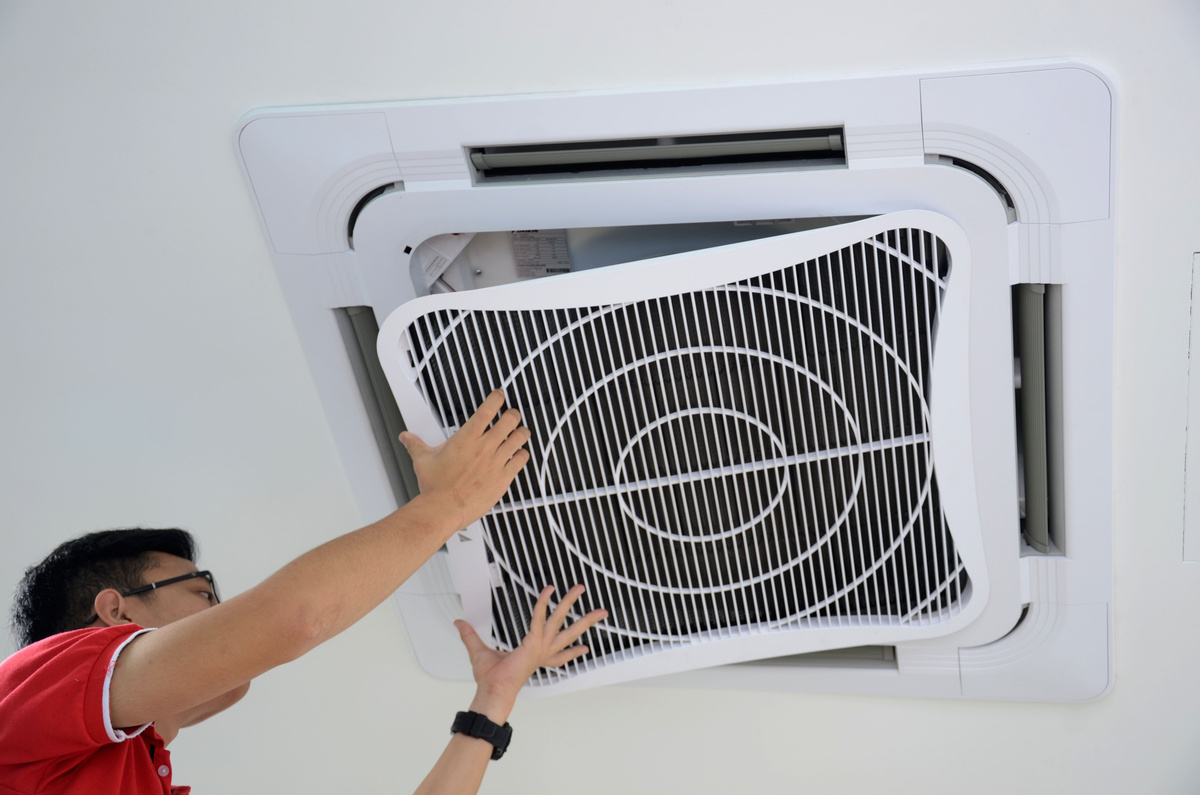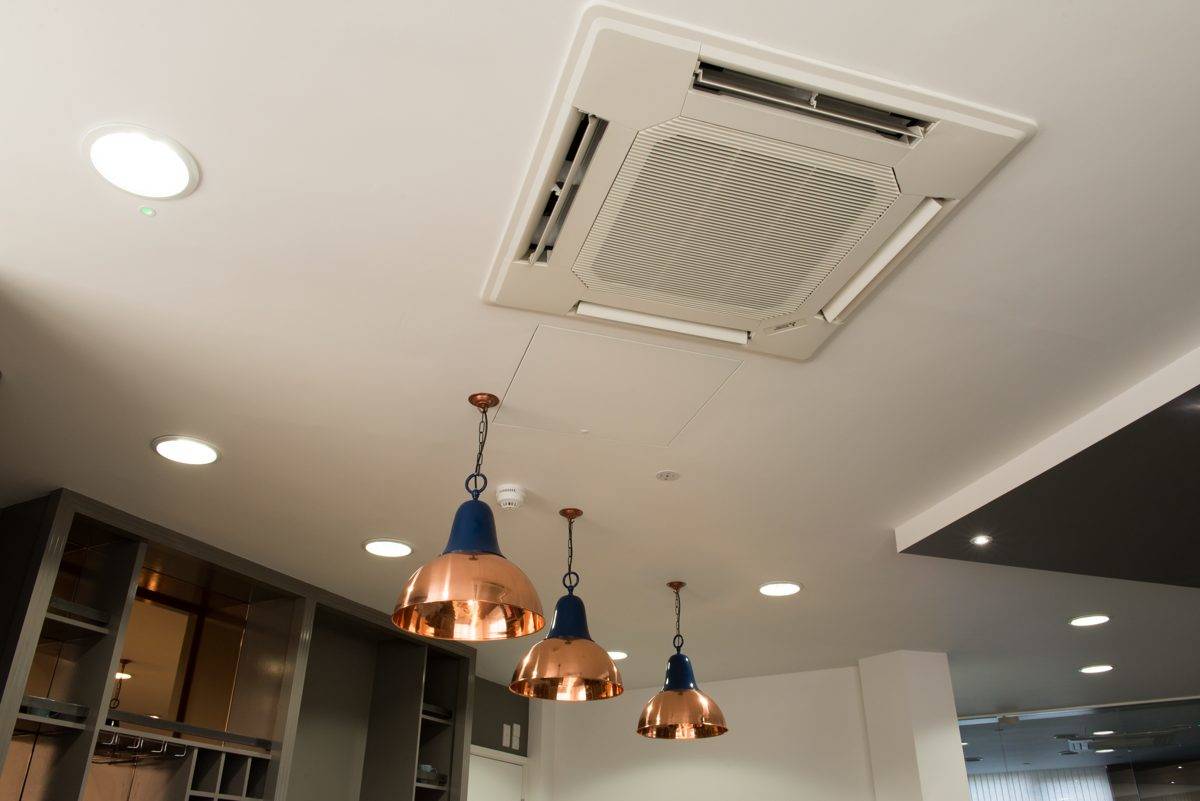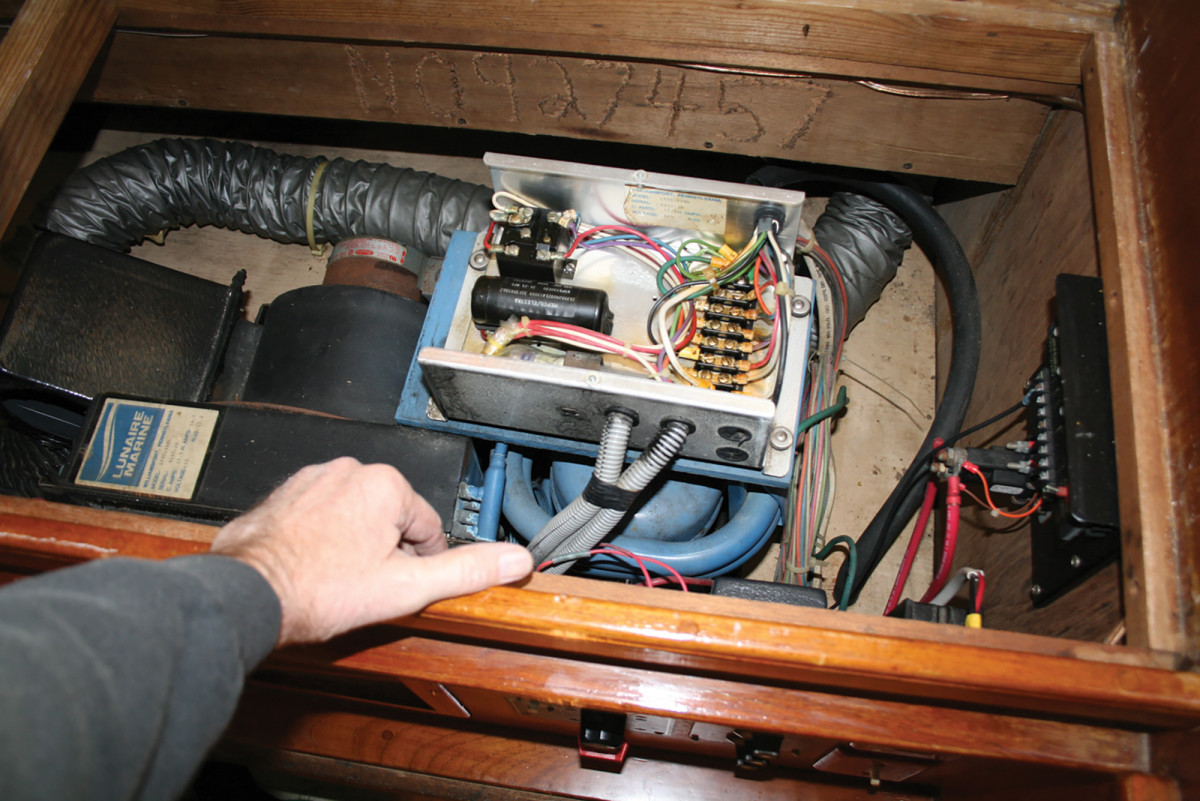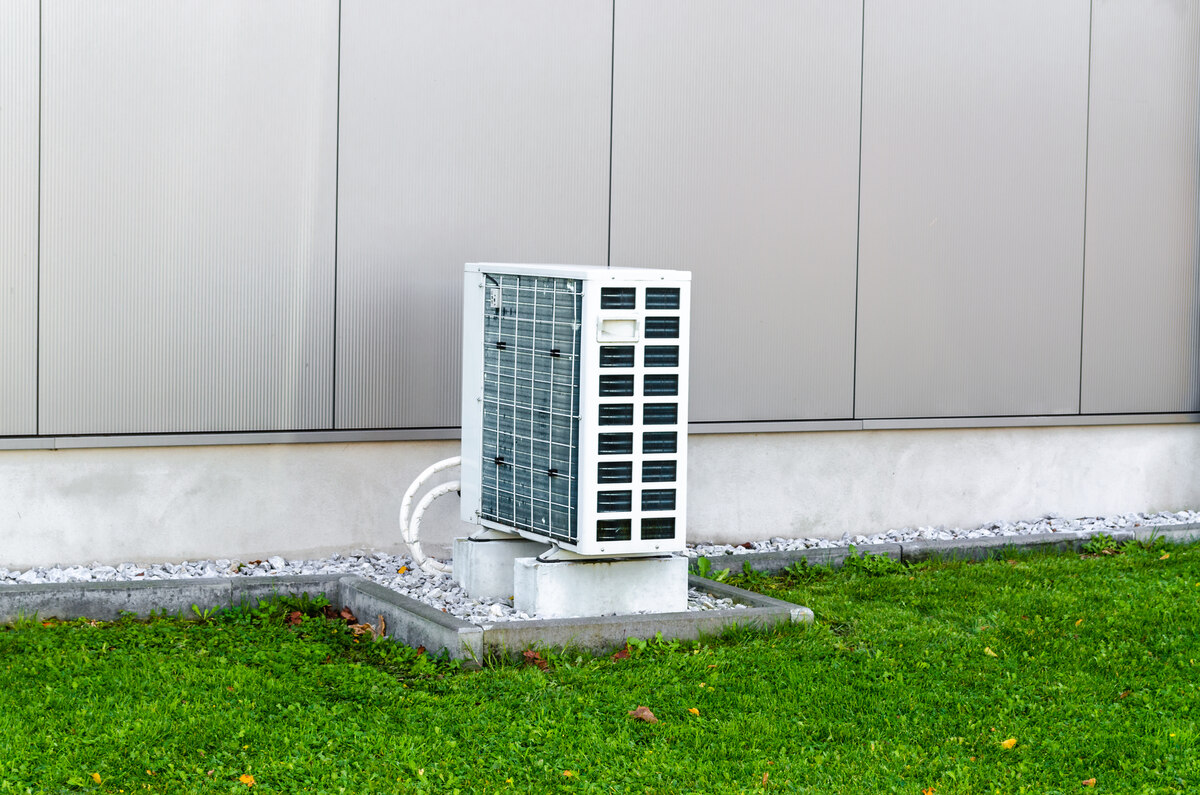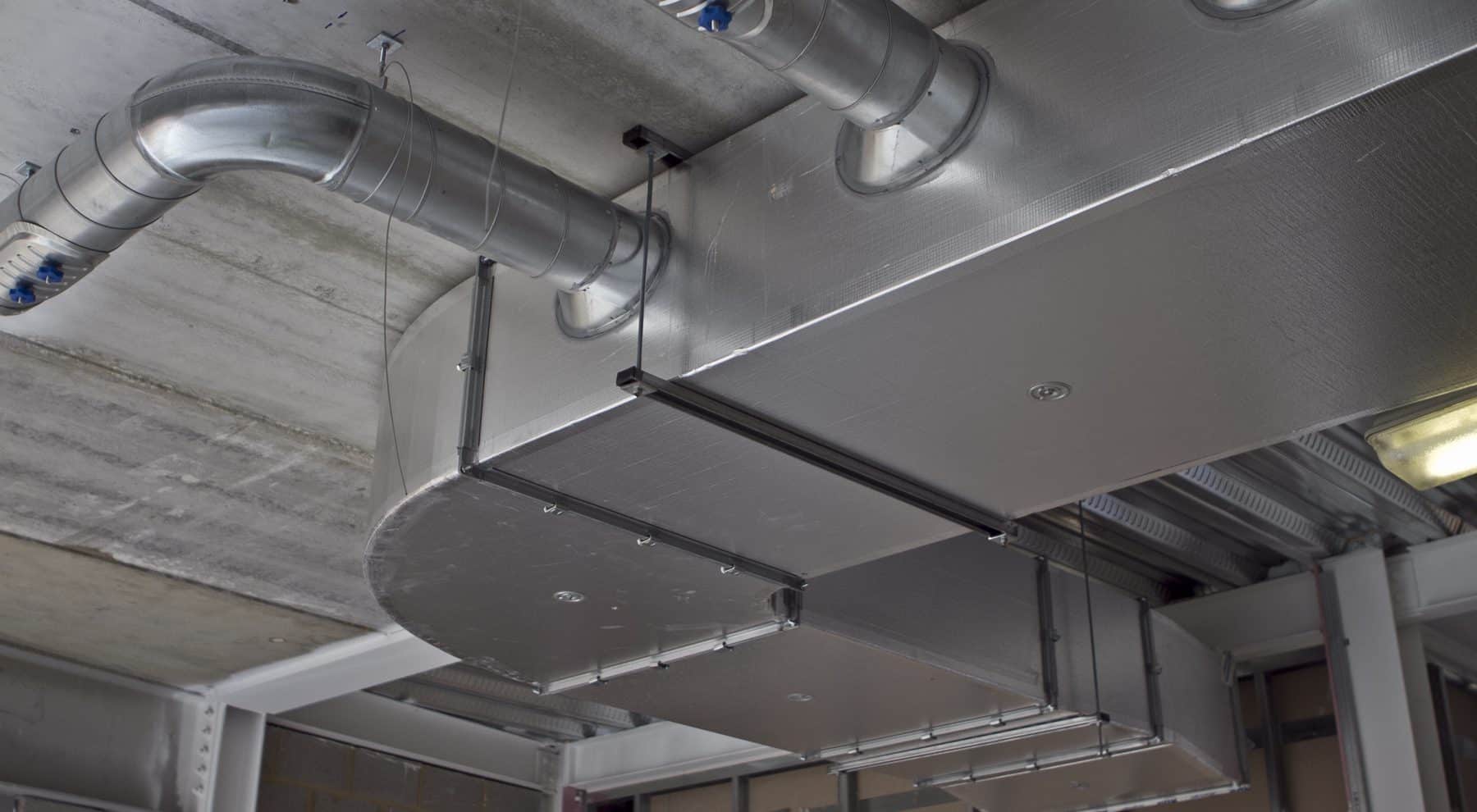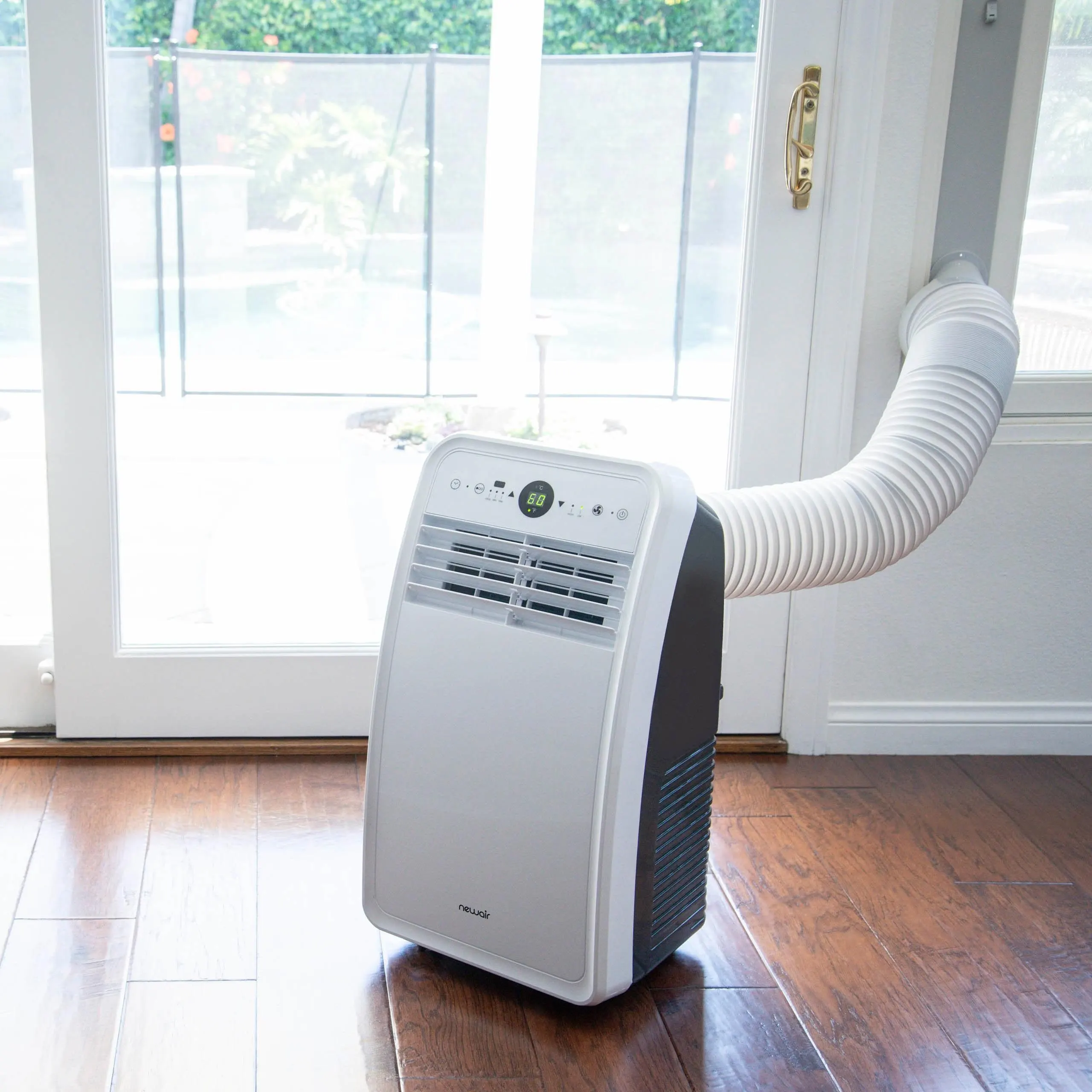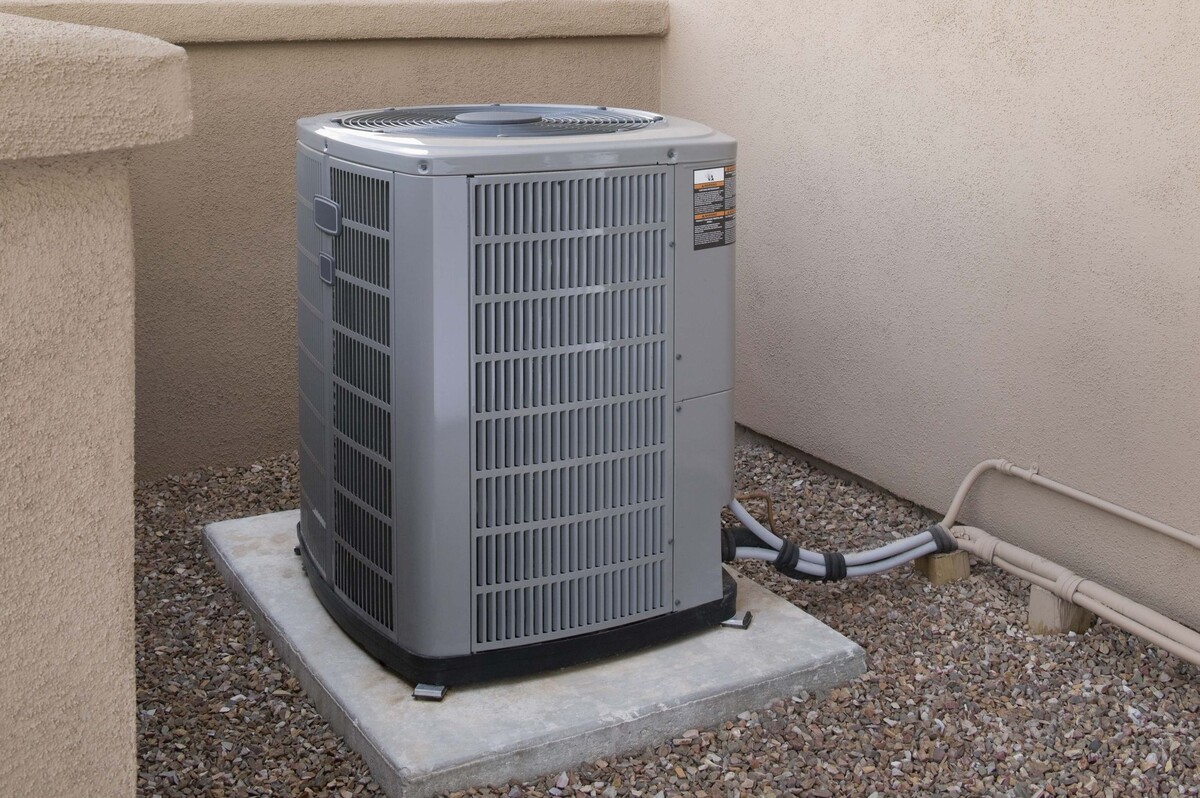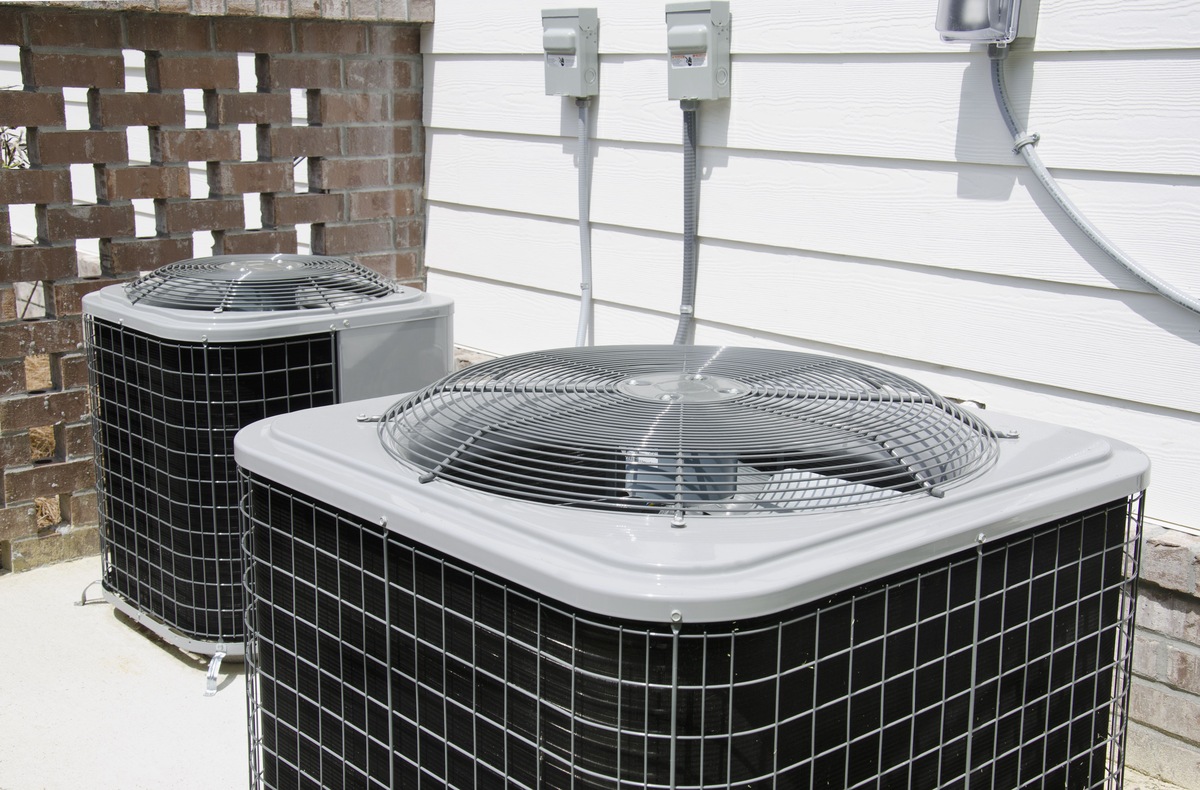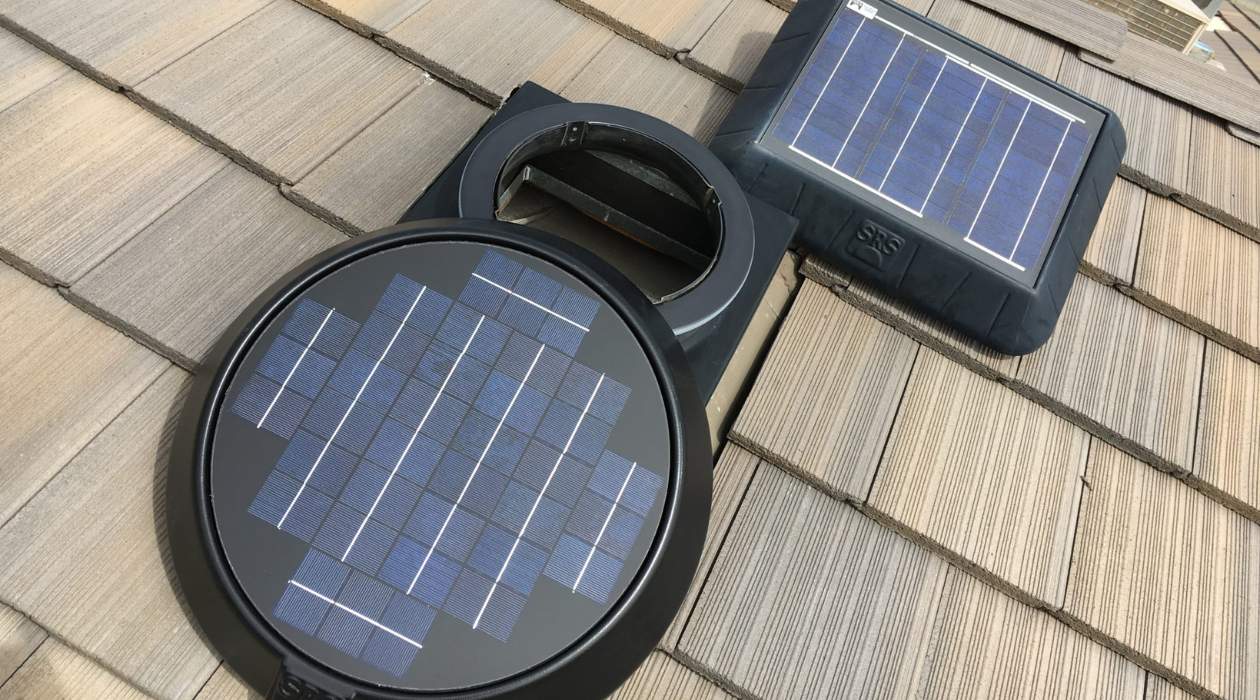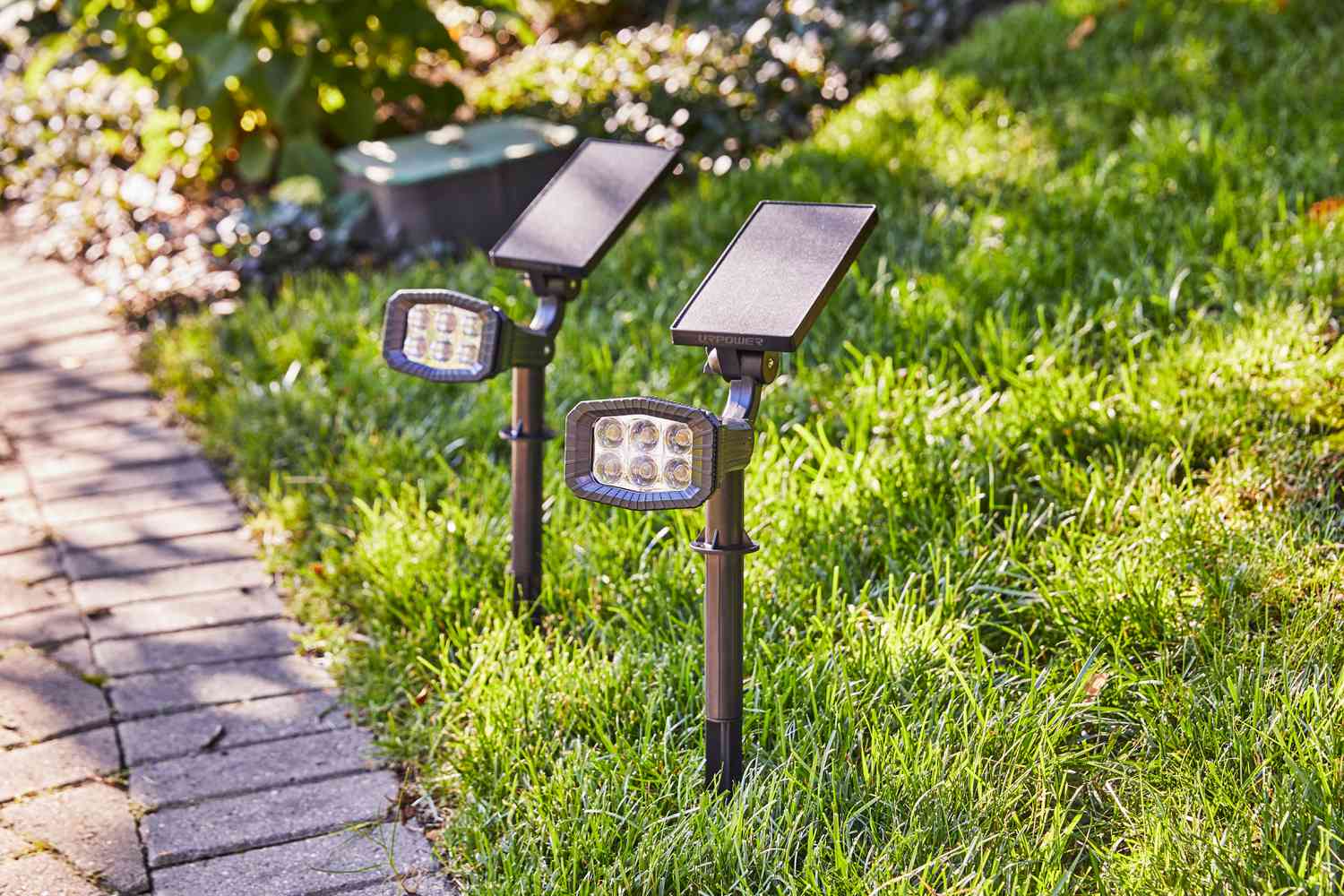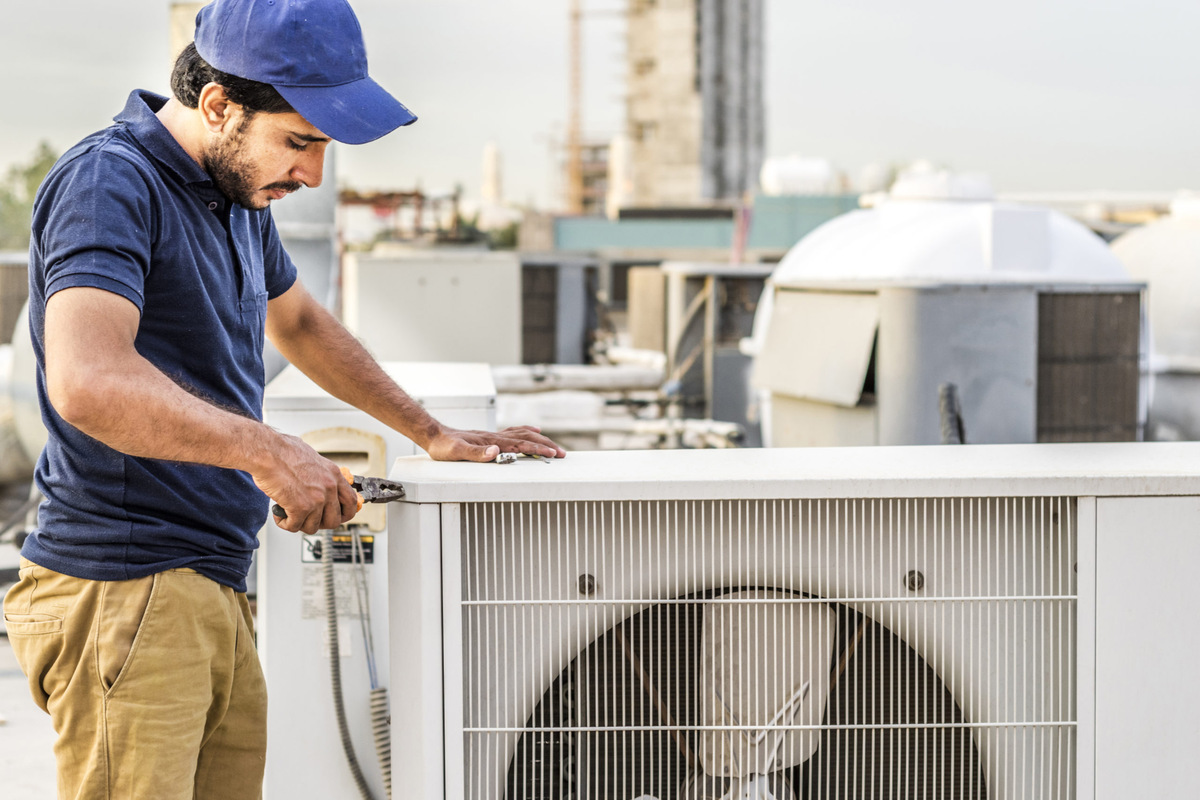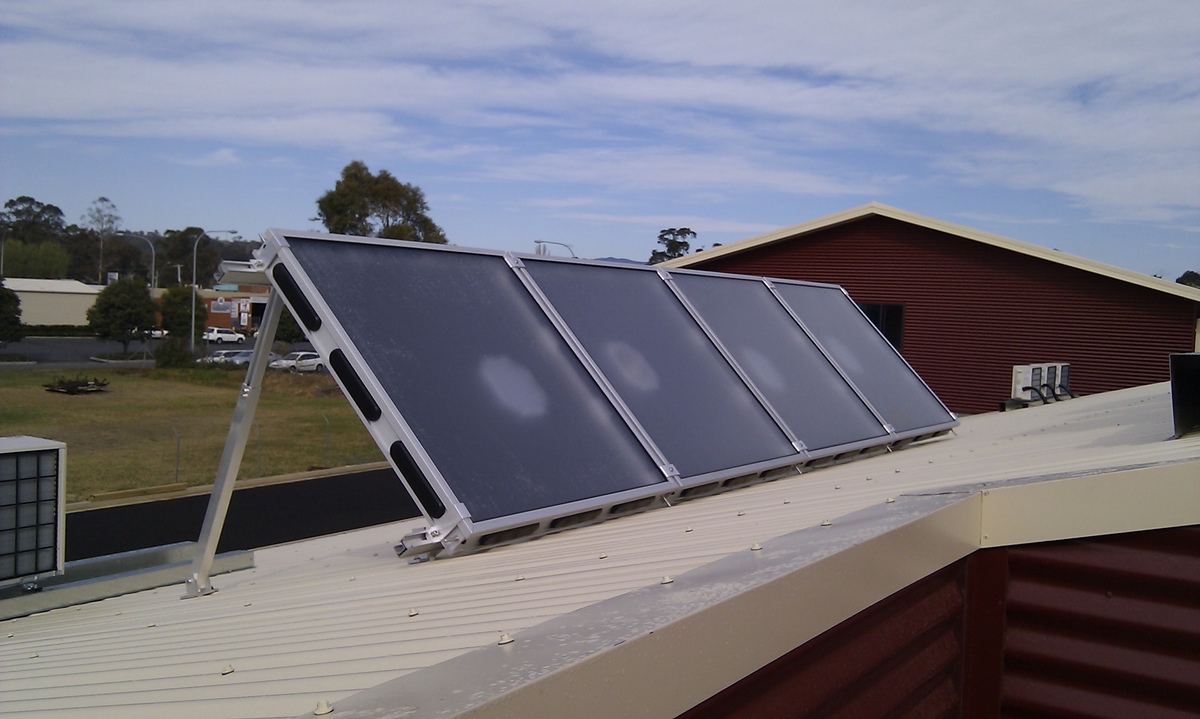Home>Home Maintenance>How Solar-Powered Air Conditioning Works
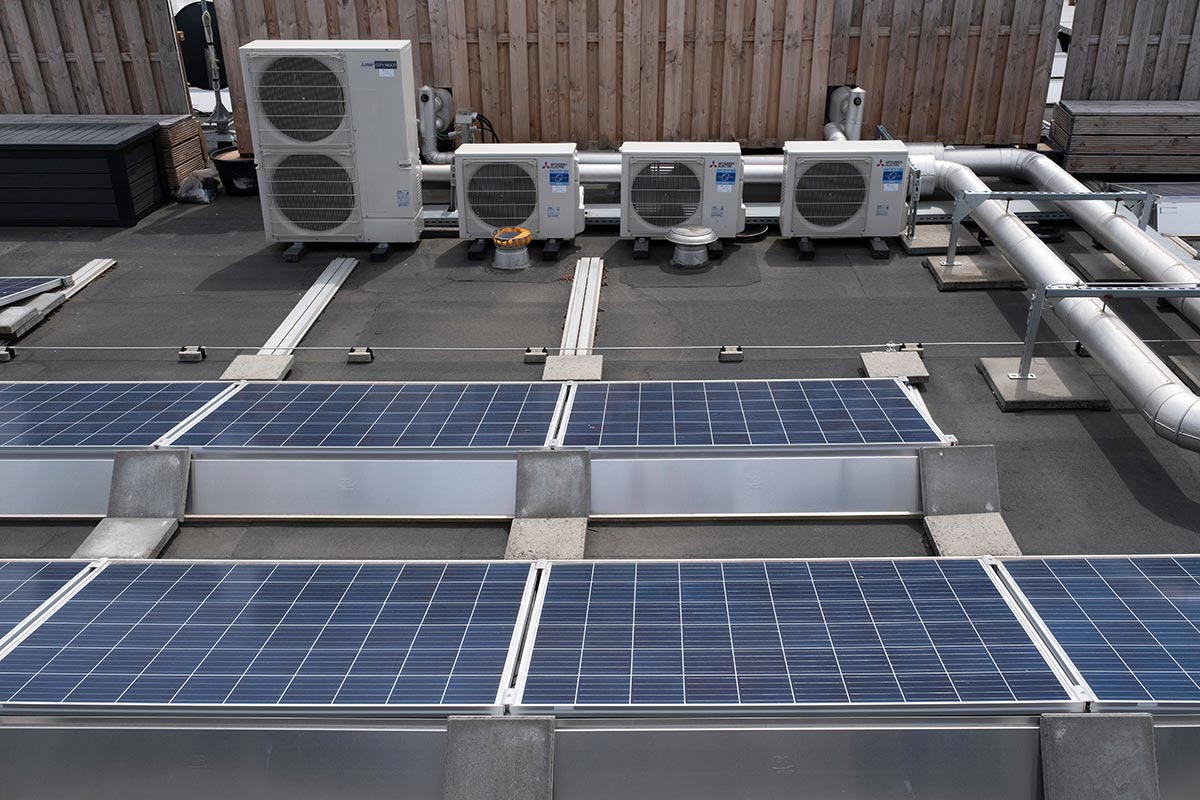

Home Maintenance
How Solar-Powered Air Conditioning Works
Modified: March 6, 2024
Discover the innovative technology of solar-powered air conditioning and how it can revolutionize your home maintenance efforts.
(Many of the links in this article redirect to a specific reviewed product. Your purchase of these products through affiliate links helps to generate commission for Storables.com, at no extra cost. Learn more)
Introduction
Welcome to the world of solar-powered air conditioning! As our society becomes increasingly aware of the environmental impact of traditional energy sources, alternative solutions are becoming more popular. Solar-powered air conditioning is one such solution that combines the benefits of renewable energy with the comfort of a cool and sustainable home.
Traditional air conditioning systems rely on electricity generated from fossil fuels, contributing to carbon emissions and increasing energy costs. Solar-powered air conditioning, on the other hand, harnesses the power of the sun to cool our homes and reduce our carbon footprint.
In this article, we will explore what solar-powered air conditioning is, how it works, its benefits, applications, and the challenges that come with implementing this technology. So, let’s dive in and discover the fascinating world of solar-powered air conditioning!
Key Takeaways:
- Solar-powered air conditioning uses sunlight to cool homes, reducing energy costs and environmental impact. It’s like having a cool home powered by the sun!
- Solar-powered air conditioning offers benefits like cost savings, energy independence, and increased property value. It’s a sustainable and efficient way to keep homes and businesses cool while helping the environment.
Read more: How Vehicle Air Conditioning Works
What is solar-powered air conditioning?
Solar-powered air conditioning is a system that utilizes solar energy to cool indoor spaces. It combines the principles of traditional air conditioning with the use of photovoltaic (PV) panels to generate electricity from sunlight. This renewable energy source eliminates the need for grid-based electricity, reducing both environmental impact and energy costs.
The key component of a solar-powered air conditioning system is the PV panels, also known as solar panels. These panels consist of multiple solar cells that convert sunlight into direct current (DC) electricity. This DC electricity is then converted into alternating current (AC) electricity using an inverter, which is compatible with the electrical systems of air conditioning units.
The AC electricity generated by the solar panels powers the air conditioning system, allowing it to cool the indoor space. The system operates in a similar way to traditional air conditioning, with a compressor, condenser, evaporator, and refrigerant working together to extract heat from the air and provide cool air circulation.
It’s important to note that solar-powered air conditioning can be used not only for cooling but also for heating. Some systems are designed to use solar energy for both cooling and heating purposes, making them even more energy-efficient and cost-effective.
By harnessing the power of the sun, solar-powered air conditioning reduces reliance on fossil fuels and lowers greenhouse gas emissions. It is a sustainable and environmentally friendly alternative to traditional air conditioning systems.
Now that we understand what solar-powered air conditioning is, let’s take a closer look at the components that make up a typical solar-powered air conditioning system.
Components of a solar-powered air conditioning system
A solar-powered air conditioning system consists of several key components working together to provide efficient cooling. Understanding these components is essential for a successful installation and operation of the system.
1. Solar Panels: The most crucial component of a solar-powered air conditioning system is the solar panels. These panels are typically installed on the roof or in an area with maximum sun exposure. The solar panels capture sunlight and convert it into electricity through photovoltaic cells.
2. Inverter: After the solar panels produce direct current (DC) electricity, it needs to be converted into alternating current (AC) electricity for conventional household use. The inverter performs this conversion, making the electricity compatible with the air conditioning unit.
3. Batteries (optional): In some solar-powered air conditioning systems, batteries are used to store excess energy generated by the solar panels. These batteries can store energy during the day for use at night or during cloudy weather. This energy storage ensures a continuous power supply for the air conditioning system.
4. Air Conditioning Unit: The air conditioning unit itself is an essential component of the solar-powered system. It consists of a compressor, condenser, expansion valve, and evaporator. These components work together to extract heat from indoor air and provide cool air in return.
5. Controller: A controller or thermostat is used to regulate and monitor the temperature and operation of the air conditioning system. It helps maintain the desired temperature and ensures efficient energy usage.
6. Electrical Wiring: Proper electrical wiring is crucial to connect the solar panels, inverter, batteries (if applicable), air conditioning unit, and controller. It is essential to ensure the safe and efficient transfer of electricity throughout the system.
7. Mounting System: Solar panels need to be securely mounted on the roof or any other suitable structure. The mounting system provides the necessary support and stability for the solar panels, ensuring they are angled correctly for optimal sun exposure.
Now that we have examined the components, it’s time to delve into the working mechanism of solar-powered air conditioning systems.
How does solar-powered air conditioning work?
Solar-powered air conditioning systems work by harnessing the power of the sun to generate electricity and provide cooling for indoor spaces. Here’s a breakdown of the working mechanism:
1. Solar Panels: The solar panels installed on the roof or in a suitable area capture sunlight and convert it into direct current (DC) electricity. The panels consist of multiple photovoltaic (PV) cells that generate electrical energy when exposed to sunlight.
2. Inverter: The DC electricity produced by the solar panels is then sent through an inverter, which converts it into alternating current (AC) electricity. The AC electricity is the type of electricity used in household appliances, including air conditioning units.
3. Powering the Air Conditioning Unit: The AC electricity generated by the solar panels is used to power the air conditioning unit. The electricity flows into the unit and activates the compressor, which pressurizes the refrigerant gas.
4. Cooling Process: As the refrigerant gas is pressurized, it becomes hot. It then flows through the condenser, where it releases heat and transforms into a high-pressure liquid. This process dissipates the heat extracted from the indoor environment.
5. Expansion Valve: The high-pressure liquid refrigerant flows through the expansion valve, where it undergoes a pressure drop. This causes the refrigerant to evaporate and cool down rapidly, absorbing heat from the indoor air.
6. Evaporator: The now-cooled refrigerant gas enters the evaporator, where it interacts with the surrounding warm indoor air. The heat from the air is absorbed by the refrigerant, cooling the indoor space.
7. Circulating Cool Air: The cooled air produced by the evaporator is then blown into the room through the air conditioning unit’s vents or ducts. This provides a comfortable and cool indoor environment.
8. Temperature Control: A controller or thermostat is used to monitor and regulate the temperature in the room. It ensures that the air conditioning system operates efficiently and maintains the desired temperature setting.
9. Excess Energy and Grid Interaction: In some cases, if the solar-powered air conditioning system generates more electricity than is needed, the excess energy can be sent back to the grid. This allows for a net metering system where homeowners can receive credits or reductions on their electricity bills.
Overall, solar-powered air conditioning systems harness solar energy to provide cooling while reducing dependence on fossil fuel-generated electricity. They offer a sustainable and cost-effective alternative to traditional air conditioning systems.
Next, let’s explore the benefits of solar-powered air conditioning.
When considering solar-powered air conditioning, make sure to properly size your solar panel system to meet the energy demands of the air conditioner, and consider using energy-efficient AC units to maximize the benefits of solar power.
Benefits of solar-powered air conditioning
Solar-powered air conditioning offers numerous benefits for homeowners and the environment alike. Let’s take a closer look at the advantages of adopting this sustainable cooling solution:
1. Energy Efficiency: Solar-powered air conditioning systems utilize clean and renewable solar energy, reducing reliance on fossil fuels. By converting sunlight into electricity, these systems significantly decrease energy consumption and contribute to a more sustainable future.
2. Cost Savings: Installing a solar-powered air conditioning system can lead to substantial cost savings in the long run. While there is an initial investment involved, the ongoing energy savings and potential incentives can offset the upfront costs. Additionally, solar-powered systems can contribute to lower electricity bills by generating excess energy to be sent back to the grid.
3. Environmental Impact: One of the most significant benefits of solar-powered air conditioning is its minimal environmental impact. By utilizing clean energy from the sun, these systems do not produce greenhouse gas emissions or contribute to air pollution. This helps reduce the carbon footprint and promotes a healthier environment.
4. Energy Independence: Solar-powered air conditioning systems provide homeowners with greater energy independence. By generating their own electricity, homeowners are less reliant on the traditional power grid, especially during peak demand periods. This increased control and self-sufficiency can offer peace of mind and stability in times of power outages or fluctuations.
5. Longevity and Durability: Solar panels used in solar-powered air conditioning systems are designed to withstand various weather conditions and have a long lifespan. With proper maintenance, these panels can last for decades, ensuring a reliable and durable cooling solution for your home.
6. Flexible Installation: Solar-powered air conditioning systems can be installed in both new construction projects and existing homes. They are versatile and can be integrated into various architectural designs and landscapes, providing flexibility for homeowners to adopt this sustainable technology.
7. Increase Property Value: Installing a solar-powered air conditioning system can boost the value of your property. With the growing demand for sustainable and energy-efficient homes, having a renewable energy system in place becomes an attractive feature for potential buyers.
8. Government Incentives: Many governments and local authorities provide incentives, tax credits, or rebates for installing solar-powered systems. These incentives can further offset the initial installation costs and make the transition to solar-powered air conditioning more affordable.
By embracing solar-powered air conditioning, homeowners can enjoy the benefits of energy efficiency, cost savings, environmental preservation, and increased property value. It is a win-win solution that combines comfort, sustainability, and financial advantages.
Now, let’s explore the various applications of solar-powered air conditioning.
Read more: How Evaporative Air Conditioning Works
Applications of solar-powered air conditioning
Solar-powered air conditioning systems have a wide range of applications and can be used in various settings. Here are some of the common applications of solar-powered air conditioning:
1. Residential Buildings: Solar-powered air conditioning systems are becoming increasingly popular in residential buildings. They provide homeowners with a sustainable and efficient cooling solution while reducing their carbon footprint. Whether it’s a single-family home, apartment, or condominium, solar-powered air conditioning can help keep indoor spaces comfortable while saving on energy costs.
2. Commercial Buildings: Solar-powered air conditioning is also suitable for commercial buildings such as offices, retail stores, and warehouses. These systems can help businesses reduce their energy consumption and demonstrate a commitment to sustainability. With the potential for cost savings and environmental benefits, solar-powered air conditioning can be a fitting choice for various commercial applications.
3. Schools and Educational Institutions: Educational institutions can greatly benefit from solar-powered air conditioning systems. By utilizing renewable energy, schools can set an example for students and staff, promoting sustainability and environmental awareness. The cost savings from reduced energy consumption can also be redirected to other educational initiatives.
4. Hospitality Sector: Hotels, resorts, and other hospitality establishments can implement solar-powered air conditioning to provide a comfortable environment for guests while reducing their carbon footprint. Solar-powered systems can be integrated into existing infrastructure or incorporated into new construction projects, highlighting the commitment to sustainable practices.
5. Agricultural Buildings: Greenhouses, livestock barns, and other agricultural buildings often require cooling to maintain optimal conditions for plants or animals. Solar-powered air conditioning systems offer an eco-friendly solution for efficient temperature control in these agricultural settings. The energy savings can help reduce operational costs for farmers and create a more sustainable agricultural industry.
6. Off-Grid Areas: In remote or off-grid areas where access to traditional electricity is limited, solar-powered air conditioning becomes a viable and practical solution. These systems can provide reliable cooling without the need for extensive electrical infrastructure. By utilizing solar energy, off-grid communities can enjoy the benefits of air conditioning, enhancing the quality of life in those areas.
7. Public Buildings: Municipal buildings, community centers, and government offices can also benefit from solar-powered air conditioning systems. These installations demonstrate a commitment to sustainable practices and serve as examples for the community. They can help reduce energy consumption, lower operating costs, and promote renewable energy in public spaces.
These are just a few examples of the many applications where solar-powered air conditioning can be implemented. With advancements in technology and the increasing availability of solar energy solutions, the possibilities for using sustainable cooling systems continue to expand.
Now, let’s dive into some of the challenges associated with solar-powered air conditioning.
Challenges of solar-powered air conditioning
While solar-powered air conditioning offers numerous benefits, there are also some challenges to consider. These challenges can impact the implementation and effectiveness of solar-powered air conditioning systems. Let’s explore some of these challenges:
1. Initial Costs: The initial installation cost of a solar-powered air conditioning system can be higher compared to traditional systems. The cost includes solar panel installation, inverter, batteries (if applicable), and other components required for the system. However, it’s important to consider the long-term cost savings and potential incentives that can offset the upfront investment.
2. Space Requirement: Solar panels require adequate space for installation, typically on the roof or in an area with maximum sunlight exposure. In some cases, the available space may be limited, making it challenging to accommodate a sufficient number of solar panels to generate the required electricity for the air conditioning system. Proper planning and assessment of available space are crucial to ensure the system’s efficiency.
3. Variability of Sunlight: Solar panels rely on sunlight to generate electricity. However, sunlight availability may vary depending on factors such as weather conditions, seasons, and the geographical location. Cloudy days or regions with limited sunlight can affect the amount of energy generated, which can impact the air conditioning system’s effectiveness. Battery storage solutions can help mitigate this challenge by storing excess energy for use during periods of reduced sunlight availability.
4. Energy Storage: Solar-powered air conditioning systems that do not have a battery storage option rely solely on the energy generated by the solar panels. This means that the system can only operate when there is sufficient sunlight. Without energy storage, the system may not be able to provide cooling during nighttime or periods of low solar energy production. Battery storage systems add an additional cost and require maintenance but can provide a continuous power supply even in the absence of direct sunlight.
5. Maintenance and Performance Monitoring: Like any other air conditioning system, solar-powered air conditioning systems require regular maintenance to ensure optimal performance. This includes cleaning the solar panels, inspecting electrical connections, and monitoring the system’s overall efficiency. Additionally, performance monitoring systems may need to be in place to identify any issues or malfunctions promptly.
6. System Integration: Integrating a solar-powered air conditioning system into an existing infrastructure, especially in older buildings, can be challenging. The electrical wiring and infrastructure may need to be modified or upgraded to accommodate solar panels and connect them to the air conditioning unit. Proper planning and coordination with professionals are essential to ensure a seamless integration process.
7. Market Availability and Expertise: The availability of solar-powered air conditioning systems may vary depending on the region and the market. In some areas, finding qualified professionals with expertise in installing and maintaining these systems can be a challenge. Working with reputable manufacturers and installers who specialize in solar-powered air conditioning is crucial to ensure the system’s efficiency and longevity.
Despite these challenges, solar-powered air conditioning is a rapidly advancing field, and technology continues to improve. The benefits, environmental advantages, and potential cost savings often outweigh the challenges, making solar-powered air conditioning an attractive and sustainable solution.
Now, let’s conclude our exploration of solar-powered air conditioning.
Conclusion
Solar-powered air conditioning is a sustainable and energy-efficient solution that utilizes the power of the sun to cool indoor spaces. By harnessing solar energy, these systems reduce reliance on fossil fuels, lower carbon emissions, and offer long-term cost savings for homeowners and businesses.
We have explored the components and working mechanism of solar-powered air conditioning systems, highlighting how solar panels generate electricity, which powers the air conditioning unit. We’ve also discussed the benefits, including energy efficiency, cost savings, environmental preservation, and increased property value.
Solar-powered air conditioning has a wide range of applications, from residential buildings and commercial establishments to educational institutions, agricultural buildings, and off-grid areas. The versatility of these systems allows for their integration into various settings, aligning with sustainable practices and supporting energy independence.
While there are challenges to consider, such as initial costs, space requirements, variability of sunlight, and system integration, these challenges can be overcome with proper planning, installation, and maintenance. Advancements in technology continue to address these challenges, making solar-powered air conditioning an increasingly viable and attractive option for individuals and businesses alike.
As we embrace the importance of transitioning towards cleaner and more sustainable energy sources, solar-powered air conditioning systems play a crucial role in reducing our environmental impact and preserving our planet for future generations.
Whether it’s for the comfort of our homes, the efficiency of commercial spaces, or the sustainability of our communities, solar-powered air conditioning offers a compelling solution that enhances our quality of life while contributing to a greener future.
So, let’s harness the power of the sun and embrace the benefits of solar-powered air conditioning as we continue to strive for a more sustainable and energy-efficient world.
Frequently Asked Questions about How Solar-Powered Air Conditioning Works
Was this page helpful?
At Storables.com, we guarantee accurate and reliable information. Our content, validated by Expert Board Contributors, is crafted following stringent Editorial Policies. We're committed to providing you with well-researched, expert-backed insights for all your informational needs.
